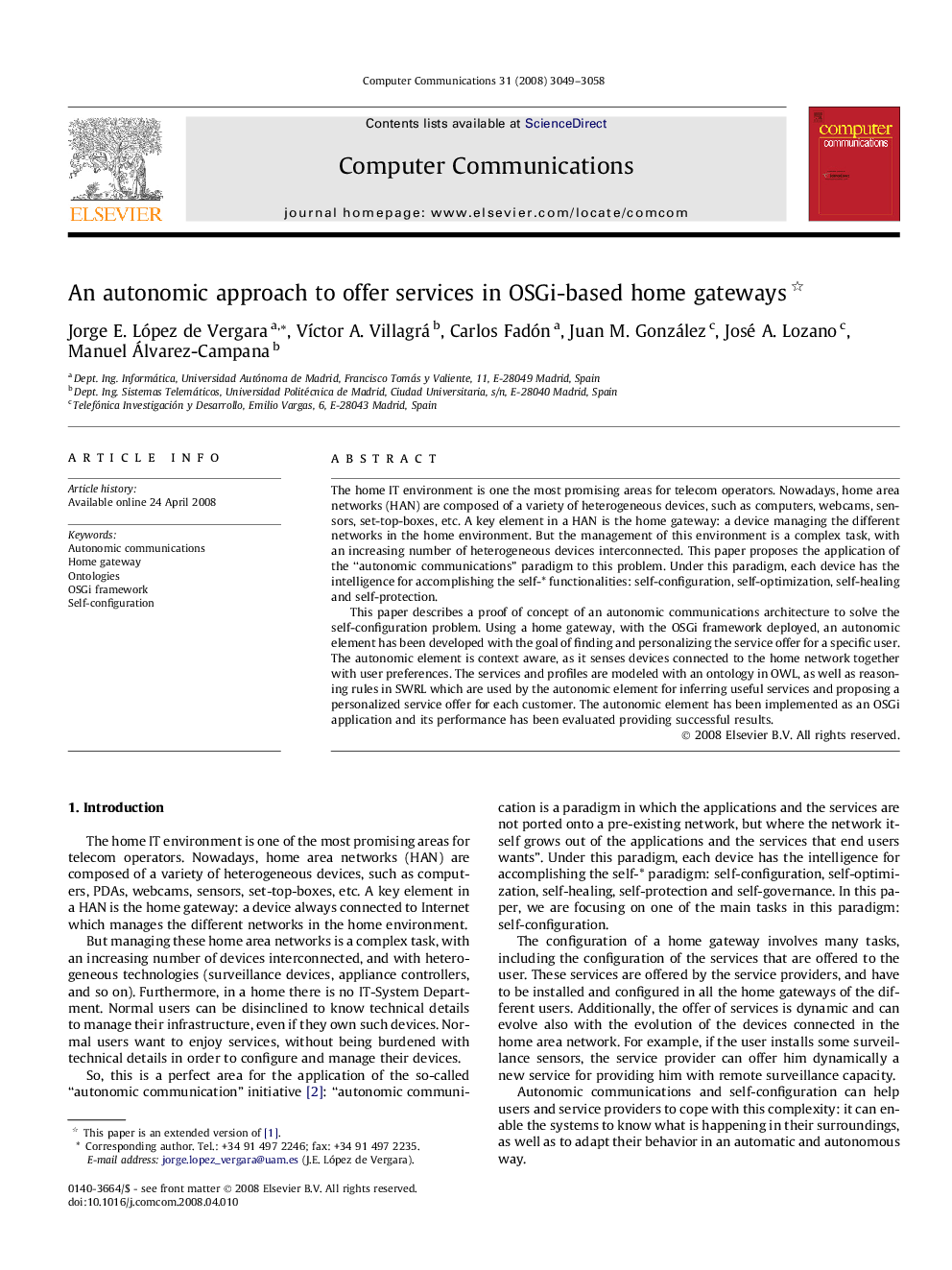| Article ID | Journal | Published Year | Pages | File Type |
|---|---|---|---|---|
| 450357 | Computer Communications | 2008 | 10 Pages |
The home IT environment is one the most promising areas for telecom operators. Nowadays, home area networks (HAN) are composed of a variety of heterogeneous devices, such as computers, webcams, sensors, set-top-boxes, etc. A key element in a HAN is the home gateway: a device managing the different networks in the home environment. But the management of this environment is a complex task, with an increasing number of heterogeneous devices interconnected. This paper proposes the application of the “autonomic communications” paradigm to this problem. Under this paradigm, each device has the intelligence for accomplishing the self-* functionalities: self-configuration, self-optimization, self-healing and self-protection.This paper describes a proof of concept of an autonomic communications architecture to solve the self-configuration problem. Using a home gateway, with the OSGi framework deployed, an autonomic element has been developed with the goal of finding and personalizing the service offer for a specific user. The autonomic element is context aware, as it senses devices connected to the home network together with user preferences. The services and profiles are modeled with an ontology in OWL, as well as reasoning rules in SWRL which are used by the autonomic element for inferring useful services and proposing a personalized service offer for each customer. The autonomic element has been implemented as an OSGi application and its performance has been evaluated providing successful results.
